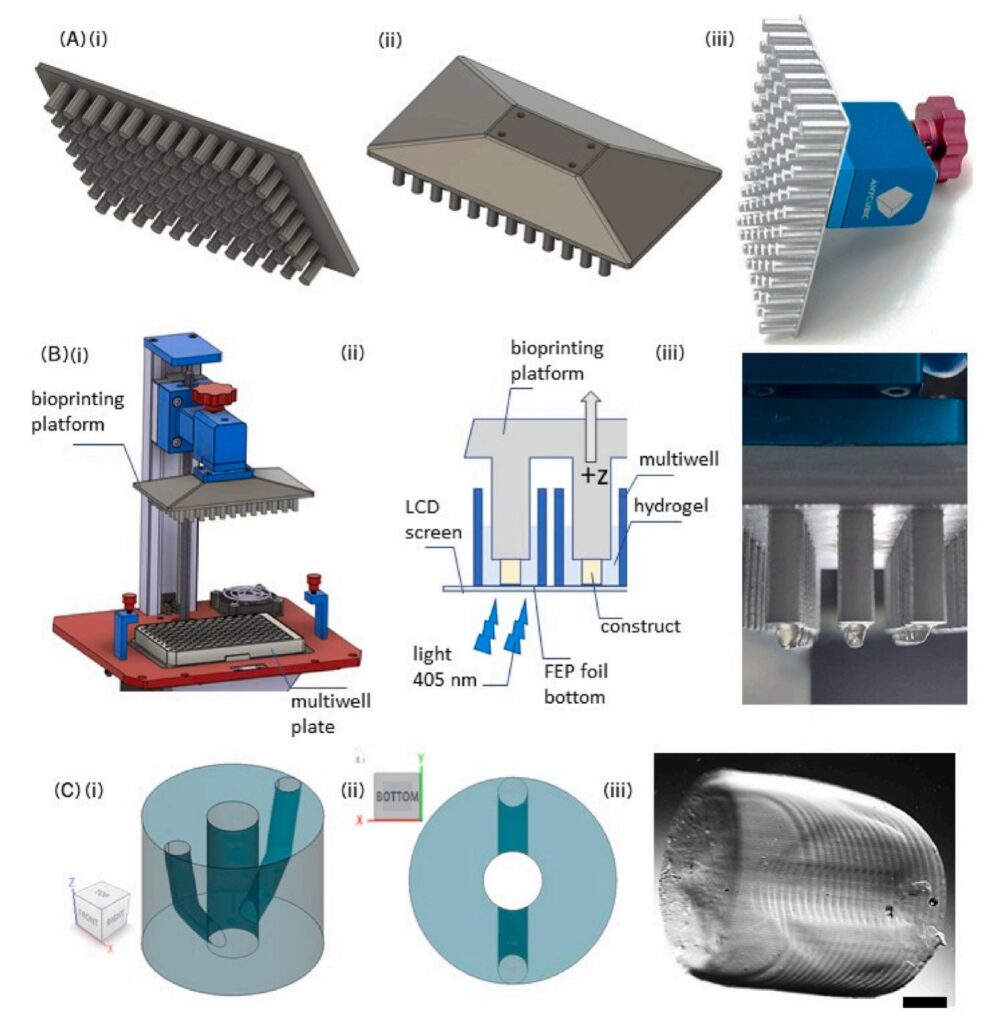A recent study led by B-BRIGHTER researchers investigates the combined effects of ECM stiffness and simulated microgravity on breast cancer progression, aiming to elucidate their potential interplay and underlying molecular mechanisms.

Breast cancer progression is significantly affected by the mechanical properties of the extracellular matrix (ECM), which undergoes increased stiffening during tumour advancement. This stiffening is primarily attributed to elevated secretion of collagen IV and laminin by cancer-associated fibroblasts. Notably, breast cancer cells cultured in two-dimensional systems exhibit reduced aggressiveness under microgravity conditions. In other words, simulating the conditions of space—specifically, microgravity—could change how breast cancer behaves.
A recently published paper led by B-BRIGHTER researchers from GUF was published at Materials Today Bio Journal and explored how the stiffness of the environment surrounding breast cancer cells influences their growth and aggressiveness. As breast cancer progresses, the tissue around the tumor gets stiffer, which actually helps the cancer become more aggressive. The key question researchers wanted to answer here was: what would happen if we changed not just the environment, but the rules of gravity itself?
To find out, they grew small clusters of breast cancer cells, known as spheroids, and placed them inside a gel that mimics the different stiffness levels of human tissue. Then, using a modified 3D printer and a special device called a clinostat, they exposed some of these cell clusters to microgravity—conditions similar to what astronauts experience in space—for seven days.
The results were eye-opening. Cells grown in a stiffer environment usually act more aggressively, but when exposed to microgravity, that aggressive behavior was significantly reduced. In some cases, the cancer cells even behaved in ways opposite to what was expected. The researchers also found changes in how certain genes and proteins were expressed, which could open the door to entirely new cancer treatments.
This kind of research could help scientists discover new ways to treat advanced stages of breast cancer, especially by targeting the way cells respond to their surroundings. While we’re not yet treating cancer in outer space, these findings bring us a step closer to understanding how altering physical forces—even gravity—can affect one of the world’s most challenging diseases.
Reference article: Gravitational forces and matrix stiffness modulate the invasiveness of breast cancer cells in bioprinted spheroids. Louise Breideband, Kaja Nicole Wächtershäuser, Ryan Sarkar, Melosha Puspathasan, Ernst H.K. Stelzer, Francesco Pampaloni. https://www.sciencedirect.com/science/article/pii/S259000642500198X?via%3Dihub
